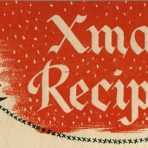South Asian Heritage Month takes place every year ending on the anniversary of Partition of the Indian Sub-Continent on 17 August 1947 by which the Indian subcontinent was divided into India, West Pakistan (now Pakistan) and East Pakistan (now Bangladesh).
In the LSHTM Library there are numerous books about the Indian subcontinent and a small selection from the Historical Collection has been picked out for this blog.
SIR JOSEPH FAYRER (1824-1907)
On Preservation of Health in India by Sir Joseph Fayrer. London : Macmillan, 1894. (LSHTM Library SKT.23 1894).
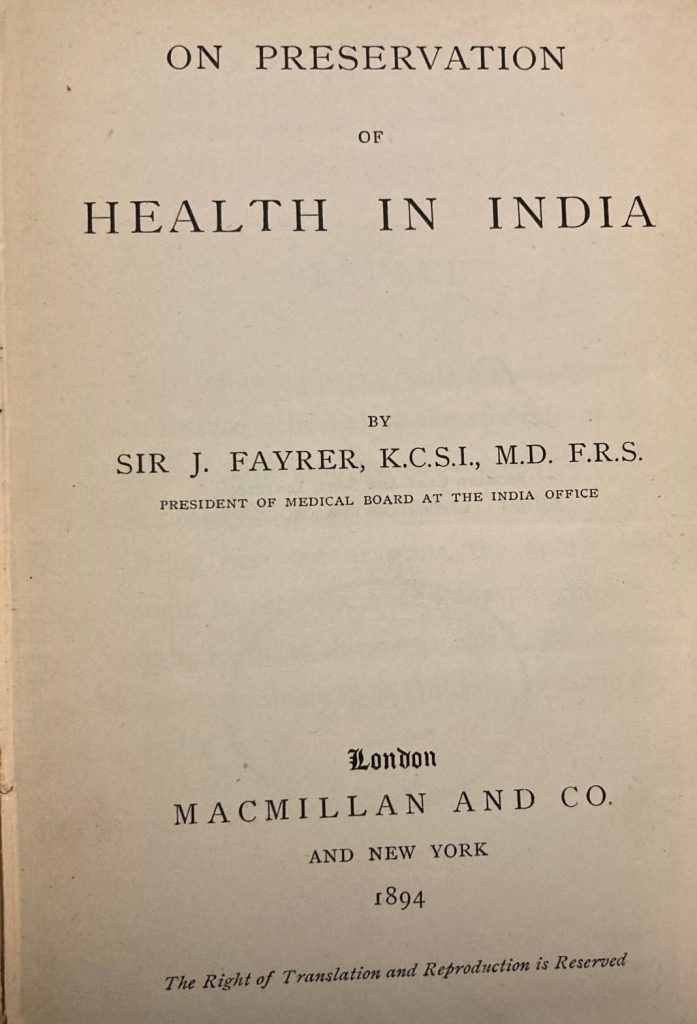
Sir Joseph Fayrer FRS was a physician who spent 22 years (1850-1872) in India. He became an expert on the treatment of snake bites and wrote a very large book on the subject illustrated with 28 chromolithographed plates of different snake species (The Thanatophidia of India, 1872). He was well-qualified, therefore, to write the tiny book On Preservation of Health of which a reviewer wrote “this primer, so small that it will almost fit into the waistcoat-pocket … describes the diseases and accidents in which immediate aid is required” (Nature 50 (1304) 1894 : 616). The book measures (H) 15.4 cm x (W) 10 cm.
Living in India in the 19th century is described in Fayrer’s autobiography Recollections of my Life published in 1900. (LSHTM Library DY FAY F 1900)
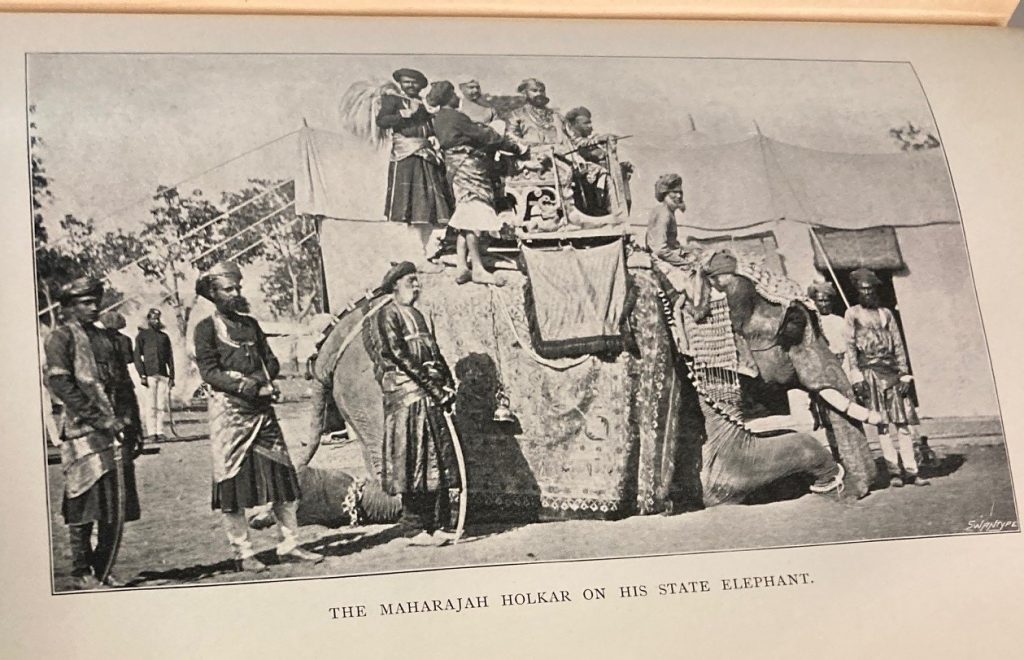
Fayrer, 1900, Recollections, is illustrated with black and white photographs. This elephant plate is opposite p. 404.
THE FAUNA OF BRITISH INDIA
The Fauna of British India (1881>). Edited by W.T. Blanford (1832-1905) and others. (LSHTM Library BL.23)
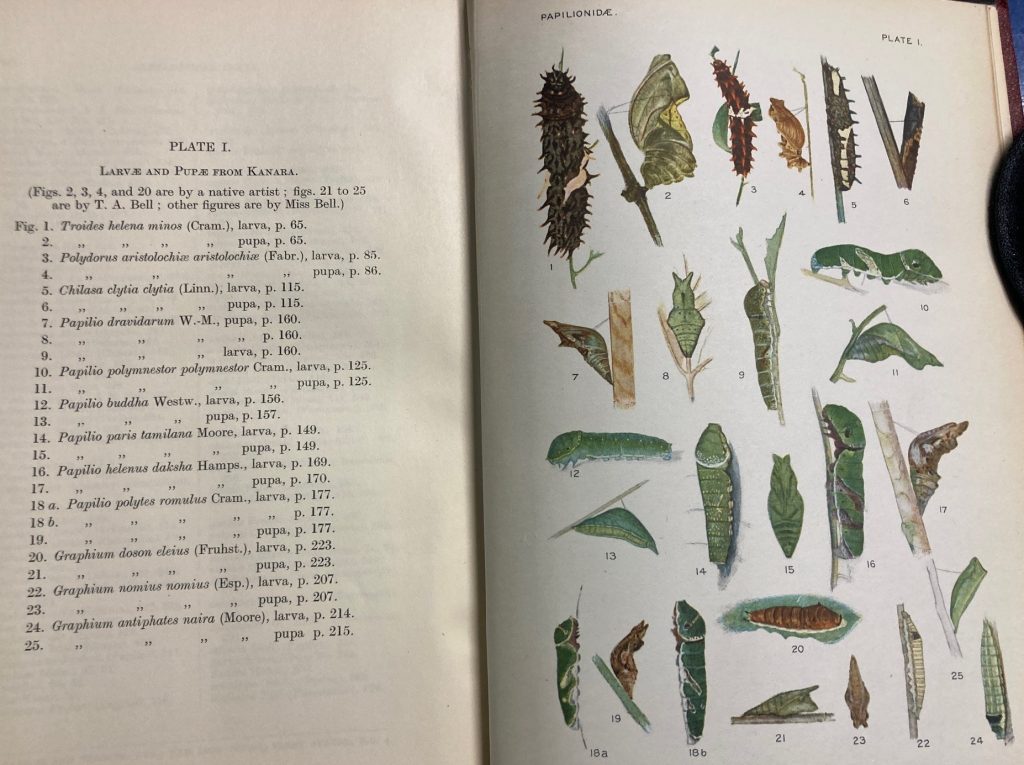
G, Talbot, 1939. Butterflies. Vol. 1. Plate 1. (The Fauna of British India).
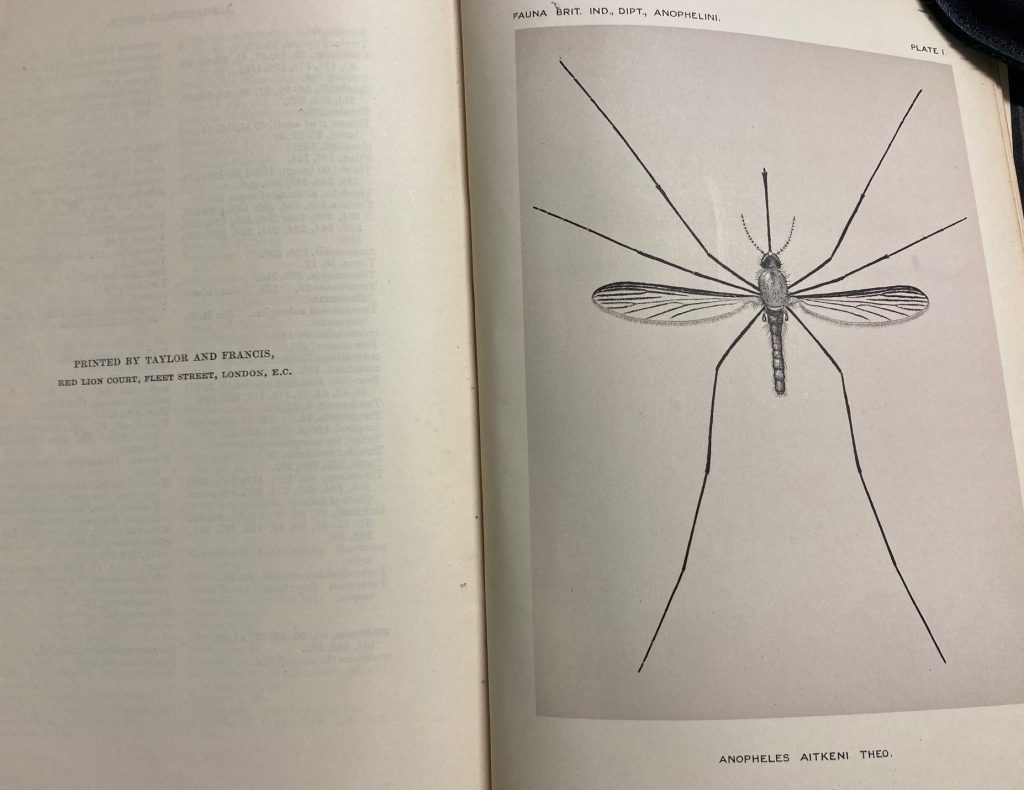
Sir S.R. Christophers, 1933. Diptera. Vol. 4. Family Culicidae. Tribe Anophelini. Plate 1. (The Fauna of British India).

G, Talbot, 1947. Butterflies. Vol. 2. Plate 2. (The Fauna of British India)

E.C. Stuart Baker, 1922. Birds. Vol. 1. Plate 1. (The Fauna of British India. 2nd ed).
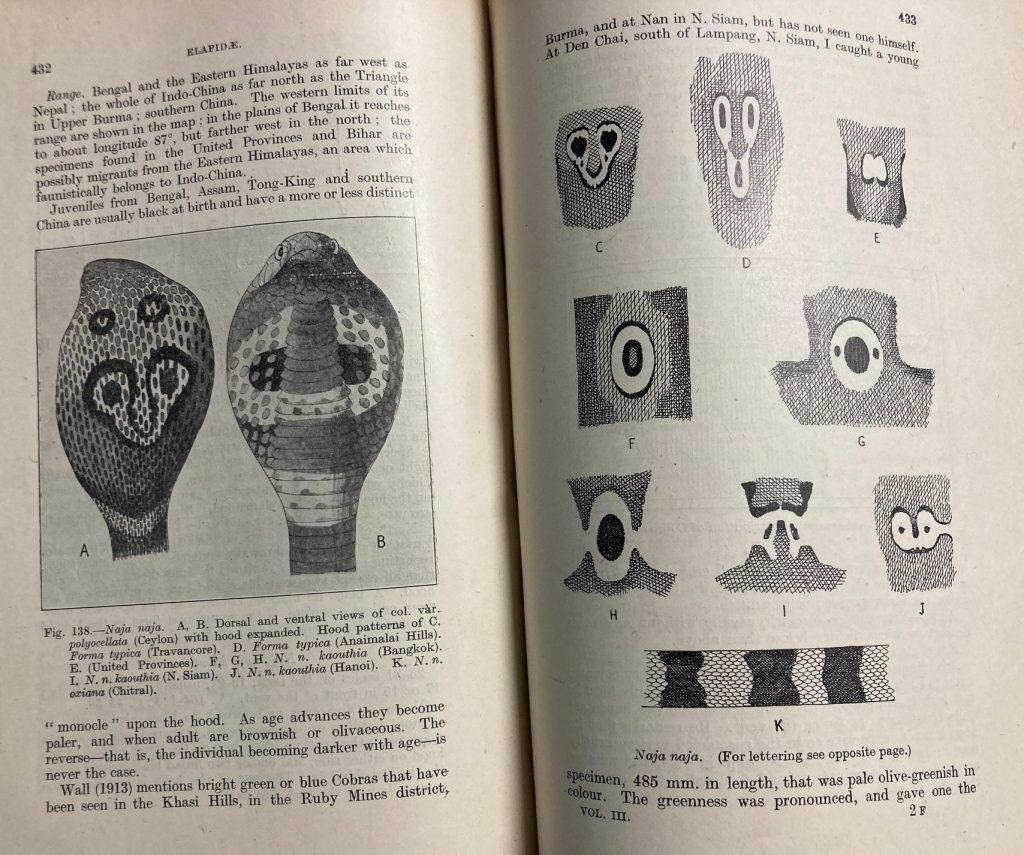
M.A. Smith, 1913. Reptilia and Amphibia. Vol. 3. Serpentes, pp. 432-433 (The Fauna of British India)
By 1881, when the Fauna of British India commenced, there were many books about Indian animals but the coverage was uneven. Birds, for example, were studied by many people and there were numerous books about them; less interesting animals like crabs were relatively undescribed. Backed by eminent naturalists including Charles Darwin The Fauna of British India was to put this right by publishing volumes on all animal groups from the mammals to the protozoans (there are more than 70 volumes in the LSHTM Library). By engaging experts on the different animal groups the series became a classic source of information and it remains an important taxonomic reference. After Indian Independence a few volumes were published under the revised title Fauna of India before it was discontinued. Many volumes of this important series have been digitized.
MARGARET IDA BALFOUR (1866-1945)
Margaret Ida Balfour had a long and distinguished career working as a doctor in India from 1892-1933. She wrote The work of Medical Women in India (co-authored with Ruth Young) which was published by Oxford University Press in 1929. (LSHTM Library DX.W.23 1929)

The stamp of ‘University College London’ on the titlepage indicates that this book was previously held by another college.
S. MOHAN DAS, HYGIENE IN BENGALI (1896)
One of the few books in foreign languages in this Library is Hygiene in Bengali by S. Mohan Das. Published in 1896 it is written entirely in Bengali in the Devanagari script for local health practitioners with a short introduction in English. The page numbers are printed in Bengali too. (LSHTM Library SO 1896).
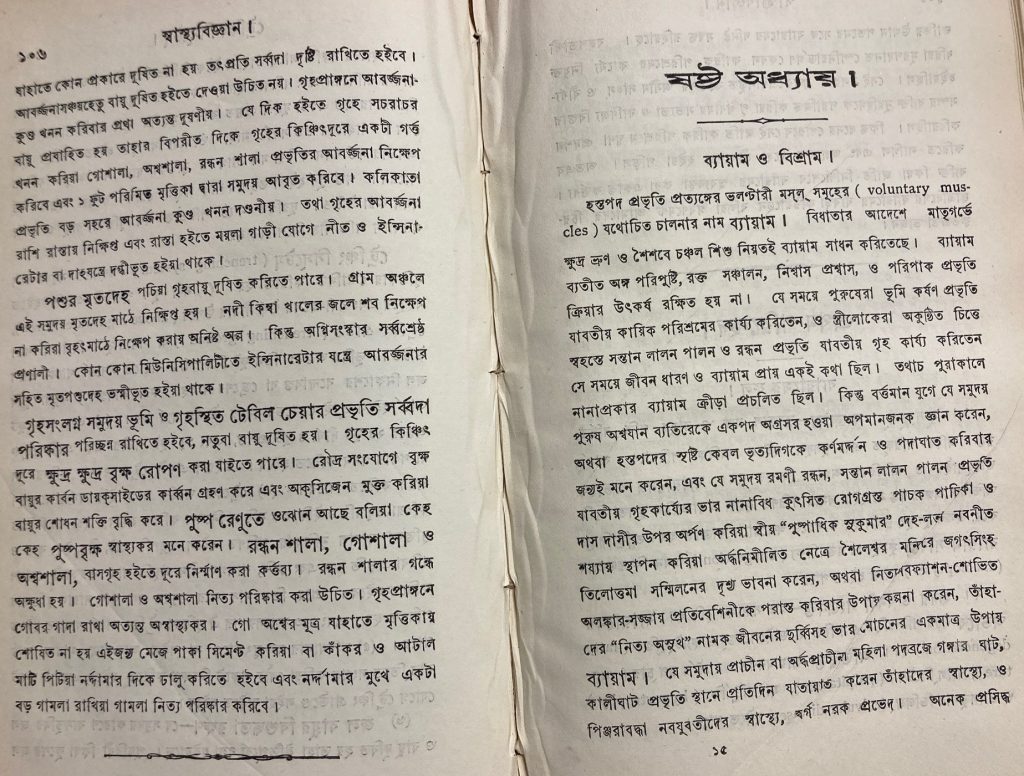
SIR RONALD ROSS (1857-1932)
Ross was a medical doctor working in India from 1881-1899. In Calcutta (now Kolkata) on 20 August 1898 Ross’s eureka moment came when he obtained the evidence he needed to show that Plasmodium, the protozoan that causes malaria, was transmitted to its hosts through the bite of Anophelene mosquito vectors. For this discovery he was elected Fellow of the Royal Society (FRS) in 1901, awarded the Nobel prize in 1902 and knighted in 1918. A Ross Institute was opened in Putney in 1926. This was formally incorporated in the London School of Hygiene and Tropical Medicine in 1934. For some years in the early 2000s on 20 August the School celebrated ‘Mosquito Day’.
In 1927 in India at the Presidency General Hospital, Calcutta, where Ross researched malaria, he was honoured when a commemorative gate was unveiled bearing a bronze medallion of him above the arch and an inscription on a plaque and a quotation from one of his poems. The Presidency General Hospital is now the Institute of Post Graduate Medical Education and Research, Bhowanipore, Kolkata. (Anon. The Ronald Ross Gate of Commemoration. Indian Medical Gazette 62 (3) March 1927. LSHTM Library Sir Ronald Ross Collected papers Vol. 1 : 24. *AG (ROSS) Vol. 1. 1896-1927).
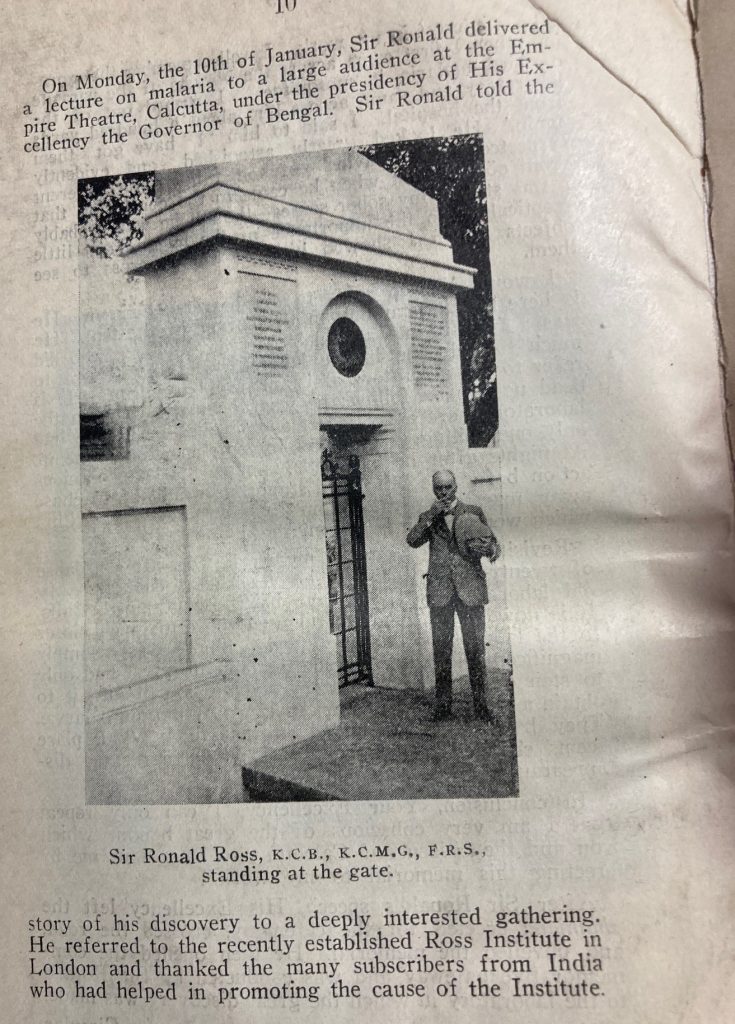
The Ronald Ross Gate (Anon, 1927 : p. 10)
SIR WHITELAW AINSLIE (1767-1837)
Ainslie was a Scottish surgeon working for the East India Company in India for 27 years from 1788-1815. He studied the medicinal plants used by local people and published the first scientific study of them in Madras in 1813. On his return to England the book was revised and expanded : Materia Indica; or some account of those articles which are employed by the Hindoos and other Eastern Nations in their Medicine, Arts and Agriculture (London : Longman, Rees, Orme, Brown, Green, 1826.) 2 vols. (LSHTM Library *RB.23 1826). Ainslie was knighted in 1835.
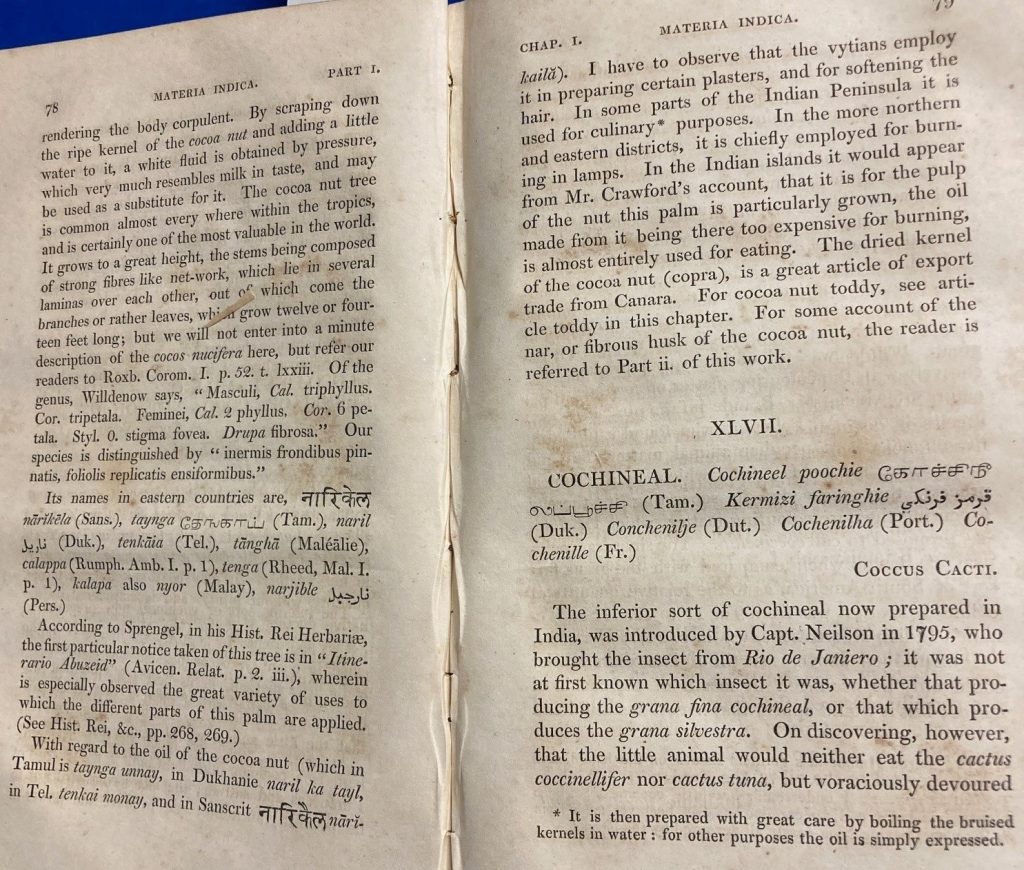
Ainslie, 1826, Materia Indica. Vol. 1. pp. 78-79.
Many of the books referred to in this blog have been digitized.
For earlier blogs on books on India in the LSHTM Library see: https://blogs.lshtm.ac.uk/library/2024/02/06/india-in-the-historical-collection-pt-2-plants-and-pharmacology/
https://blogs.lshtm.ac.uk/library/2024/02/21/indian-medicinal-plants-an-early-nineteenth-century-illustrated-reference-book-by-the-indian-physicians-k-r-kirtikar-b-d-basu-and-i-c-s-lshtm-blog-no-9-february-2024/
Also see this blogpost on South Asian Heritage Month by Naomi Stewart from the LSHTM Comms team (internal only): Celebrating South Asian Heritage Month with Naomi Stewart (sharepoint.com)
LSHTM Library Rare Books Collection Blogs is an occasional posting highlighting books that are landmarks in the understanding of tropical medicine and public health. The Rare Books Collection was initiated by Cyril Cuthbert Barnard (1894-1959), the first Librarian, from donations and purchases, assisted with grants from the Carnegie United Kingdom Trust. There are approximately 1600 historically important rare and antiquarian books in the Rare Books Collection.
Many of the LSHTM Library’s rare books were digitized as part of the UK Medical Heritage Library. This provides high-quality copyright-free downloads of over 200,000 books and pamphlets for the 19th and early 20th century. To help preserve the rare books, please consult the digital copy in the first instance.
If the book has not been digitized or if you need to consult the physical object, please request access on the Library’s Discover search service. Use the search function to find the book you would like to view. Click the title to view more information and then click ‘Request’.
You can also email library@lshtm.ac.uk with details of the item you wish to view. A librarian will get in touch to arrange a time for you to view the item.
Researchers wishing to view the physical rare books must abide by the Guidelines for using the archives and complete and sign a registration form which signifies their agreement to abide by the archive rules. More information is available on the Visiting Archives webpage.

